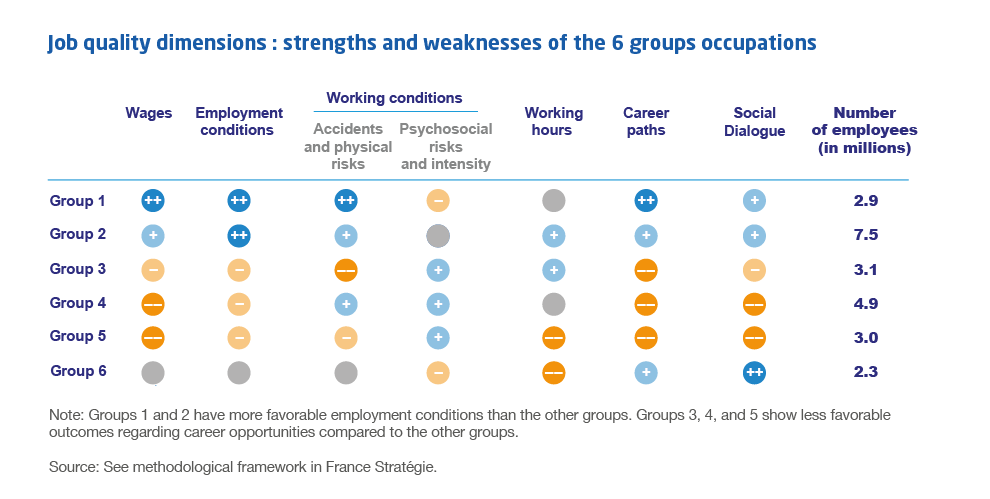
No configuration is ideal, making it challenging to estimate a number of "quality" jobs, however not all configurations are equal. The first two groups of occupation, encompassing both private and public sector executives and medium-skilled occupations , share mainly positive characteristics, except for some weaknesses, especially intense and high-pressure work for executives. Three other groups offer lower job quality with lower salaries, less favorable career paths, and relatively precarious employment. This configuration combines with physical constraints for the industry workers group and with significant constraints regarding working time for the group primarily composed of low-skilled service workers, while the last group which include low to medium-skilled employees remains relatively spared by these risks. The last group includes care, social services and security jobs shows heavy constraints regarding working time but relatively favourable salaries and career opportunities.
As salaries do not compensate for low job quality, improvements cannot solely rely on salary policies. Job protection, training, career opportunities, and working conditions appear to be levers for improvement. We shall identify priorities at the sector level. Because job quality often correlates with professional satisfaction and a greater ability to work until retirement, it serves as a lever for job attractiveness and social progress. The challenge is twofold: to enhance workers well-being and to support employer’s productive capacities.

Read the full document in french





